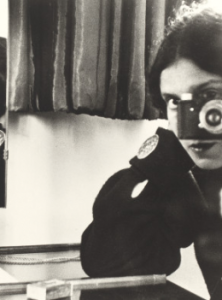Robert Terwilliger, a character on “The Simpsons,” once said, “Committing yourself is a way of finding out who you are. A man finds his identity by identifying.” I found this quote particularly relevant during my visit to the National Gallery of Art’s spectacular new exhibit “The Serial Portrait: Photography and Identity in the Last One Hundred Years.”
The collection, found in the west wing of the gallery, is composed of a number of portraits that derive enormous power through a series of photographs that deconstruct and reconstruct both their subjects and contexts. The collection makes a strong case for a more fluid and artistic understanding of identity.
One of the things that helped me better view this collection was a new appreciation of visual media in particular photos, acquired from a class I’m taking this semester called “Documentary Storytelling.” Before this class I always presumed — as I believe many do — that photography’s primary role is, as the class’ name would imply, documentation. However, my class and my visit to this collection have pushed me to examine the tension that photography exploits between an impartial rendering of reality and the alternate, constructed reality it actually represents, which depends on context, perspective and artistic elements.
Take one of the opening series of portraits: that of Nikki S. Lee. It begins with a self-portrait of the photographer dressed in a graphic tank top with her hair in intricate, waist-length braids. She stands in front of two black men, one in all white with flashy sunglasses and the other in all black with a knitted do-rag. The next photograph shows Lee with another woman on top of her in a highly sexual position, a tattoo just visible on the woman’s lower back. In the next, Lee wears business attire at a well-lit cafe table on a patio with two men in suits.
In each of these photos Lee embodies the culture she is capturing, or she captures what we expect to find in each of them. Taken as a collection, the viewer is challenged to decide whether it is possible for each of these photos to be a rendering of reality, capturing who Lee is, or if these photos actually blur and distort our perception of her identity. This series highlights our ability to shape our own identities, especially when we are aware the camera’s eye is upon us.
Another series in the exhibit that reinforces this notion is Nan Goldin’s, who photographed her transvestite roommate, Ivy. The most striking photo in this collection was one depicting Ivy leaning in to light the cigarette of a man in a painting. It’s a beautiful photograph that is almost perfectly split in half, drawing a parallel in the viewer’s eye between Ivy and the painted man. The caption next to the photograph speaks to this parallel, hinting at the irony that in a way both Ivy and the painted man are “works of art”.
It has everything to do with the nature of identity itself. Maybe the perfect example of this is a Facebook profile. Even the most passive user of Facebook has a profile, which either consciously or unconsciously is highly curated, from the photos to the people we decide to call “friends.”
While walking through this exhibit, I couldn’t help but think about how much time I — along with most of my peers — spend shaping identity in this way and the role photography plays in this process. Perhaps the much-reviled “mirror selfie” is an inevitable by-product of a larger cultural perception of portraiture and identity as art.
The serial portraiture collection at the National Gallery is a beautiful and thought-provoking exhibit that is well worth the visit. It might even be status worthy.









